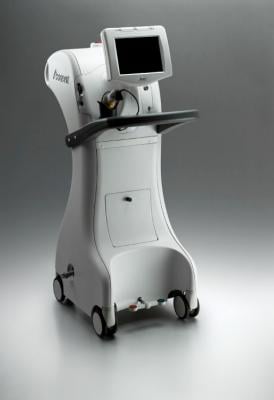
July 20, 2017 — Rates of recurrence in early-stage non-melanoma skin cancer (NMSC) patients were virtually identical if they were treated with iCAD’s Xoft Axxent Electronic Brachytherapy (eBx) System or Mohs micrographic surgery, according to a new study. Mohs micrographic surgery is accepted as the most effective technique for removing basal cell carcinoma and squamous cell carcinoma, the two most common skin cancers.
The results of the matched-pair cohort study of 369 patients were published online in the peer-reviewed Journal of Contemporary Brachytherapy.
“In recent years, we have seen substantial clinical evidence indicating that electronic brachytherapy offers comparable results to Mohs surgery in appropriately selected early-stage non-melanoma skin cancer patients,” said Rakesh Patel, M.D., lead investigator of the study, radiation oncologist and medical director, Department of Radiation Oncology, Good Samaritan Hospital, Los Gatos, Calif. “These data provide an entirely new level of clinical research confirming that treatment with eBx can help patients achieve similar low rates of recurrence with excellent cosmetic outcomes compared to Mohs surgery.”
The study compared clinical outcomes of patients treated with eBx and Mohs surgery at different treatment centers. In the population of 369 patients, a total of 188 were treated with eBx and 181 with Mohs surgery. Data reflected treatment of 416 lesions (208 in the eBx group and 208 in the Mohs surgery group), including 226 basal cell carcinomas and 190 squamous cell carcinomas. At a mean follow up of 3.4 years, 99.5 percent of eBx patients and 100 percent of Mohs surgery patients remained recurrence free. Statistics provided by the American College of Mohs Surgery state that Mohs surgery has a success rate “up to 99 percent.” Overall incidence of toxicity was similar in both treatment groups. In addition, physician-rated cosmetic outcomes were either “excellent” or “good” in 97.6 percent of eBx-treated lesions and 95.7 percent of Mohs surgery-treated lesions.
Results from patients treated with eBx in this study are consistent with the results from a growing body of additional clinical research assessing outcomes with eBx in the treatment of early-stage NMSC. An earlier outcomes study of 297 lesions with up to 63 months of follow-up (mean 16.5 months) showed only one recurrence and excellent cosmesis in 100 percent of patients at years 4-5. A separate study of 524 lesions treated with eBx with mean follow-up of 12.5 months showed a 0.7 percent recurrence rate.
“Our goal in treatment of NMSC is to eliminate the lesion while preserving function in the region affected by cancer,” Patel added. “These results indicate that eBx can achieve these goals without putting patients at higher risk of recurrence or complications.”
The Xoft System is U.S. Food and Drug Administration (FDA)-cleared, CE marked, and licensed in a growing number of countries for the treatment of cancer anywhere in the body, including early-stage breast cancer, gynecological cancers and non-melanoma skin cancer.
For more information: www.xoftinc.com


 April 17, 2024
April 17, 2024 








